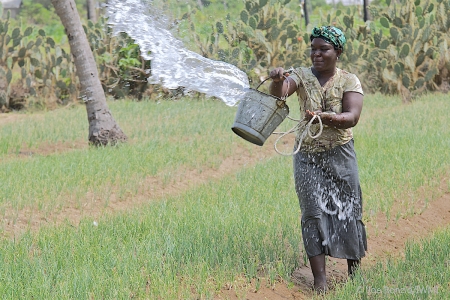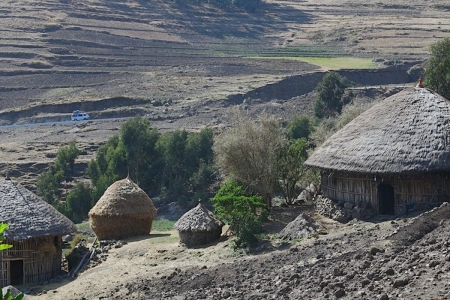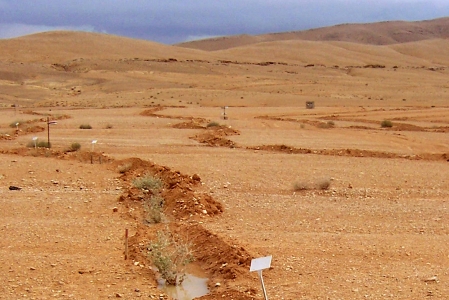In the past, agricultural production in Ghana has been heavily reliant on rainfall, while fertilizers and pesticides have been inappropriately used, partly due to a lack of extension services. Overall, farmers struggled. But now, Ghana is facing a bright future and here’s why: The way we use science in agriculture is changing. Agriculture is becoming a profitable venture, and using apt scientific approaches, Ghanaian farmers are beginning to reap the benefits.
Technology-fueled agriculture success in Ghana
Ghana has in recent years been leveraging technological advancement to achieve food security and Sustainable Development Goal (SDG) 2 on Zero Hunger. This has resulted in increased yields and reduced imports. In December 2018, Ghana exported excess plantain produce to neighboring countries in the sub-region, while not a single grain of maize was imported by the government in 2018 to supplement food produced by the country itself. Agriculture sector growth increased from 2.9% in 2014 to 8.1% in 2017, and today it contributes 21.2% to the country’s GDP, according to the 2019 budget.
Of course, Ghanaian farmers cannot rely on the creation of new technology alone. Technology needs to be supported by smart implementation, good policies and great work. Ghana’s rise demonstrates four key lessons that could be helpful for other countries.
Top lessons from the Ghanaian agricultural boom
1. Connect through technology
Information technology is playing a key role in enhancing agricultural production in Ghana. Beyond vehicular machines, farmers have started using modern technologies to enhance productivity. One compelling example comes from the Yonko Pa Association, an out-grower scheme for maize farmers. Previously, their production was plagued by the fall armyworm disease, which required swift action. With the help of drone technology pesticides were sprayed onto the farms of about 50 farmers, which were all salvaged in a few hours. Afterward, farmers were educated on the use of the drone, the input application period and the application process. Other technology firms provide real-time agricultural information platform via mobile phones. Through these platforms, farmers have access to and can pay for weather forecasts and market prices. Weather forecasts help farmers plan, and knowing the current price of commodities empowers them to sell their produce at the right price. What’s particularly exciting is that all this is delivered via voice technology and in local languages.
Mobile applications and social media are also being used to market farm produce. Online grocery shops are providing door-to-door delivery when customers order online.
2. Research, research, research
Research and development in the agricultural sector is a sine qua non in achieving food security. This is because a majority of Africa’s poor and malnourished population depends largely on farming. In this regard, research into improved agricultural practices that enhances productivity can be particularly effective in reducing poverty and hunger. In Ghana, the Council for Scientific and Industrial Research (CSIR) remains the main research organization within the National Agricultural Research Systems (NARS) and has carried out cutting-edge research in various sectors. For example, to address food security in Ghana, CSIR introduced six (6) new varieties of cassava and millet in 2015 and 2017 respectively.
According to MOFA’s Agricultural Sector Progress report 2017, an estimated 2,534 demonstrations were set up in 2017 to showcase various proven technologies to smallholder farmers as compared to 218 demonstrations established in 2016. The number of beneficiary farmers reached through the community field demonstrations were 127,848 of which 41.3% were women.

3. Add value to the value chain
New, smart agribusinesses are enhancing agricultural value chains. Farmers are provided with marketing opportunities that help them link their products with potential customers. Other agribusiness entrepreneurs are adding value to raw materials and selling new products at appropriate prices. For example, chocolates are now designed in artistic Ghanaian local symbol designs. Other state institutions have created an online trading platform for farmers to trade their commodities at favorable prices or store them to receive warehouse receipts. The receipt system gives farmers the opportunity to deposit goods (mostly grains) in order to acquire a warehouse receipt; a financial instrument that shows deposit proof with the quantity and quality of the goods in question. Farmers can delay the sale of their commodities to a period when prices are more favorable. Warehouse receipt systems can therefore mobilize credit for the agricultural sector and improve agricultural trade.
4. Ensure government support
The government has also been instrumental in Ghana’s agricultural transformation. Under the National Service Scheme Farming Project, graduates are provided financial and agronomic support to venture into various agricultural endeavors. The Scheme has graduate farmers engage in crop production such as tomatoes, maize, green pepper and cucumber and a livestock farm at Nungua with more than 10,500 animals.
The agricultural projects are ad-ons to the Scheme where graduates were offered “white collared” jobs; a system that contributed to the “choking of the public sector” as human resources were redundant. With the success of the Farming Project, the Scheme aimed at expanding more acreage of production.
Looking through 2019 and beyond
The year 2019 provides fresh opportunity for the country to further expand gains in the agricultural sector. The government plans to boost animal production. This can be achieved by addressing the various bottlenecks that impedes the progress of agriculture. Considering Ghana’s plans to expand its agricultural sector, enhanced road infrastructure, storage facilities and other agro-based infrastructure are in greater demand than subsidies.
With improved infrastructure, the cost of production in the agriculture sector can be reduced, hence generating welfare gains for consumers. Providing proper storage facilities will help reduce post-harvest losses. All of these efforts will reduce the risk of production to its barest minimum, which could compel financial institutions and investors to invest in agriculture. With these measures in place, Ghanaian farmers will have even better chances of turning their toils into profitable businesses – contributing to food security and economic growth across the country.
Finally, there should be a continuous national agenda or policy to prioritize agricultural development. There have been instances where the sustainability of agriculture dwindles as new governments have other sectors of the economy high on their scale of preference.
Thrive blog is a space for independent thought and aims to stimulate discussion among sustainable agriculture researchers and the public. Blogs are facilitated by the CGIAR Research Program on Water, Land and Ecosystems (WLE) but reflect the opinions and information of the authors only and not necessarily those of WLE and its donors or partners. WLE and partners are supported by CGIAR Trust Fund Contributors, including: ACIAR, DFID, DGIS, SDC, and others.
















Comments
Borewell helps in irrigation and reduces dependency on rain. We at vinylpipes.com wish very good luck to the farmers of Ghana.